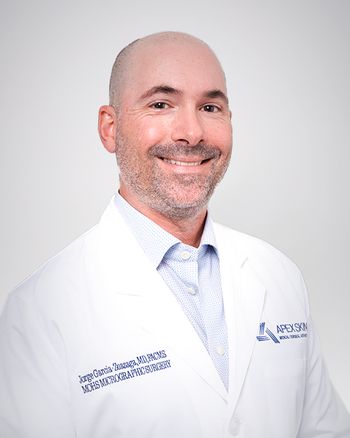
- Dermatology Times, June 2019 (Vol. 40, No. 6)
- Volume 40
- Issue 6
8 ways to build a strong physician referral network
Many dermatology practices depend on referrals for a significant portion of annual revenue, and those most successful have a sustainable plan in place. This expert offers eight tips that will help you create a strong referral network.
Maybe you remember a day when being popular was important. While the same kind of popularity ranking doesn’t apply to your dermatology practice, what your peers in medicine think of you is important and can positively or negatively impact your bottom line.
To help you examine where you are - or aren’t - with referrals, Glenn Morley, senior consultant in plastic surgery and dermatology at
1. HAVE A PLAN
“Hoping today’s referrals will be tomorrow’s is not enough,” says Morley, who stresses the importance of a referral management plan that prioritizes patient and referrer retention as a key strategy. “There’s no time like the present to address this important business management component - especially if yours, like many practices, depends upon referrals for a significant portion of your revenue.”
2. APPRECIATE TECHNOLOGY
“Twenty years ago, before widespread use of computers and technology, doctors rarely had formalized referral management plans,” she says. “Referrals were straightforward. You knew the doctor, you were convenient to their office and you were convenient to patients. Then a sea change occurred with the advent of technology for everyman, coupled with major changes in the healthcare environment.”
The impact has been both good and not so good, Morley says.
“Practice consolidations have put pressure on some longtime referring physicians to change referring habits,” she adds. “Demands on staff and higher staff turnover have sometimes created fractures in communications from referring practice to dermatology practice. It’s all caused referring physicians and physician groups to rethink their referral choices.”
Then there’s the impact of negotiating third-party contracts, says Morley.
“Larger dermatology practices and healthcare systems realize stronger negotiating power when contracting with payers, and these relationships also play a part in determining where patients are referred,” she says.
3. KNOW THAT PATIENTS TALK
“Today’s patient is not yesterday’s patient,” Morley says. “Because access to immediate messaging is literally at patients’ fingertips, it doesn’t take long for word of ‘mouse’ to get around.”
Practices have changed. Physicians and staff feel pressure to see more patients in a short amount of time. As a result, patients can sometimes get caught in the middle and have a less-than-optimal experience, she says.
“Feelings of dissatisfaction can be amplified for patients who made an appointment with a dermatologist who was highly recommended by their own doctor,” she adds. “For those patients, long wait times or overtaxed staff with abbreviated communication styles can feel like personal affronts, and their negative feedback can trickle back to the referring physician.”
Keep tabs on patient satisfaction and get ahead of any issues in real time. Instill confidence in the referring physician that they made the right choice in sharing your name, Morley says.
4. ESTABLISH A FEEDBACK LOOP
“Research and self-examination are the cornerstones of improvement,” says Morley. “Feedback from patients or referring practices may lead to changes in how you communicate and present yourself, as well as in how you follow up. Establishing a healthy feedback loop should be a part of any referral management plan.”
Research also means asking questions of referring practices around you.
“Survey physicians that refer to you or make time for a brief in-person visit,” she says. “Schedule a staff lunch or visit the practice. Conduct short key physician and staff ‘interviews’ to ask, ‘What can we do to enhance the experience for you, your staff and the patients you refer? If it’s within our sphere of control, we want to do it.’ That demonstrates commitment and caring.”
5. DO THE MATH
“Determine what percentage of your total revenue is referral-based,” says Morley.
- What does that look like on a per-provider or per-referring practice basis?
- Are referrals increasing or decreasing?
- What is the trajectory for that revenue?
- If that revenue disappeared, would the practice still be OK?
If the last answer is “no,” you need to develop some solid plans, she says.
6. UNDERSTAND WHAT’S HAPPENING
Complacency is not an option in a dynamic healthcare environment.
“Practice owners and boards have a fiduciary responsibility to identify threats to the fiscal health of their organization,” Morley says. “Like a game of chess, consider your position and options for several different moves based on any external threats. Annual strategic planning should include understanding the climate around you and ways your practice may be impacted.”
7. APPOINT CHIEFS
Practices can realize enormous success when leadership invests in referral management and development effort, says Morley.
“It creates intention and accountability and also helps stimulate buy-in and involvement from other employees,” she says. “For any plan to succeed there must be ownership and accountability.
Think carefully about who should own referral development, and what that might look like from performance metric standpoint. Accountability is everything.”
Internal medicine and PCPs are natural referral groups but also consider marketing to other specialties or disciplines. Think “out of the box.”
Morley adds that at a recent ADAM meeting in Washington, an attendee in a referral development course said they’d reached out to naturopaths and had begun to quickly accrue referrals.
“Still another has begun marketing to independent medical spas and massage therapy groups,” she says.
8. SPREAD THE WORD
“Invest in marketing materials that highlight and differentiate your practice brand and tell a story about your amazing team culture and why patients come to you,” Morley says. “If your patient satisfaction rate is high, share that metric
too. Your marketing should differentiate your brand and send a clear message about what you do best and most often.”
Finally, ensure critical referral revenue streams flow in an unrestricted way, no matter what changes transpire inside or outside your practice, she says.
“Solid research, thoughtful planning, appropriate resource allocation, good communication and clear accountability provide a pathway to a referral management plan that is strong and sustainable.”
Articles in this issue
over 6 years ago
Medical billing and coding changes you should knowover 6 years ago
Tips to minimize audit stressover 6 years ago
Basal cell carcinoma treatments on the horizonover 6 years ago
What's new in melanoma treatment?over 6 years ago
Positive workplaces improve patient experiencesover 6 years ago
How to advocate for the future of dermatologyover 6 years ago
How to use patents to maximize value for your ventureover 6 years ago
How to navigate FMLA in your practiceover 6 years ago
Dermatologist recommended alternatives to traditional sunscreenover 6 years ago
OTC options can provide prescription alternativesNewsletter
Like what you’re reading? Subscribe to Dermatology Times for weekly updates on therapies, innovations, and real-world practice tips.

















